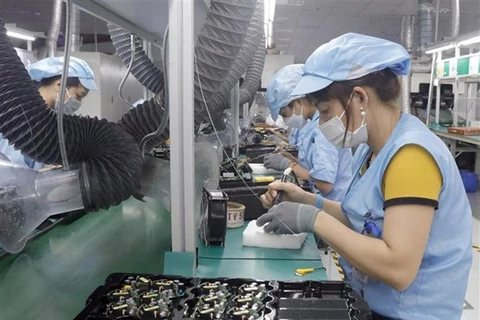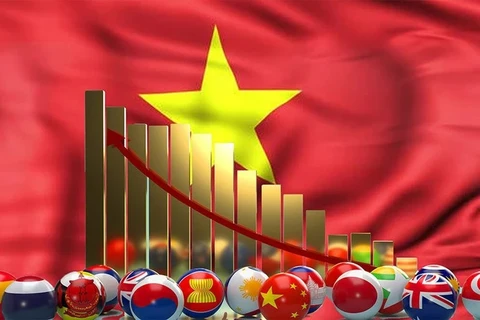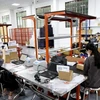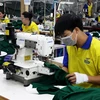
Trucks loaded with Vietnamese lychees head towards China. AMRO forecast that ASEAN+3's growth would reach 4.5 per cent in 2024, reflecting the impact of weaker external demand on Vietnam and Singapore. (Photo: VNA)
AMRO's quarterly update of the ASEAN 3 Regional Economic Outlook also has a positive outlook for the country's inflation, which is expected to moderate further to 2.9% this year and 2.7% next year.
However, its growth forecast for 2023 has been reduced from 6.8% to 4.4% on grounds of weak manufacturing exports.
AMRO has maintained the growth forecast for the Plus-3 economies at 4.6% for 2023, up from 3.2% in 2022. The projected growth is revised downward to 4.5% for 2024 to reflect the impact of weaker external demand on Singapore and Vietnam.
"Both Singapore and Vietnam are highly exposed to manufacturing exports, which are still weak across the region," said AMRO Chief Economist Hoe Ee Khor.
He also pointed out that the Plus-3's economic recovery was riding on resilient demand within the region. Private consumption growth stayed firm in most economies, supported by a rebound in the labour market and easing inflation.
"Inflation is coming down quite nicely and faster than we expected, although it's still above the target for most countries," said the economist.
Headline inflation remained relatively elevated in the Philippines and Singapore due to supply constraints in various sectors. Core inflation has been relatively sticky, especially in those economies where demand conditions were strong.
AMRO has revised its 2023 inflation forecast for the region excluding Laos and Myanmar to 3.0%, lower than its previous projection of 3.4%. The decelerating inflation has allowed many central banks to ease the pace of monetary tightening, giving a big push to consumption.
"Central banks have really paused their tightening cycles. Some of them, in fact, began to ease their monetary policy, especially in Vietnam," said the economist.
The drag on exports was particularly acute for highly-open ASEAN 3 economies. While export growth remained negative in April, it is forecast to take a turn for the better soon, on the back of a turnaround in the global semiconductor cycle.
The steady return of Chinese visitors would also provide an additional push for growth. Ultra-regional tourism has been robust, offsetting the slow return of tourists from China so far due to the late reopening of borders.
AMRO also warned of the increase in market risk aversion since March, following banking sector distress in the US and EU, signs of weakness in China's recovery, and the threat of US debt default, which have put downward pressure on regional currencies and equity markets.
"One major risk will be the potential recession in the US and EU, which will materialise and dampen export demand," said the economist./.
VNA
























